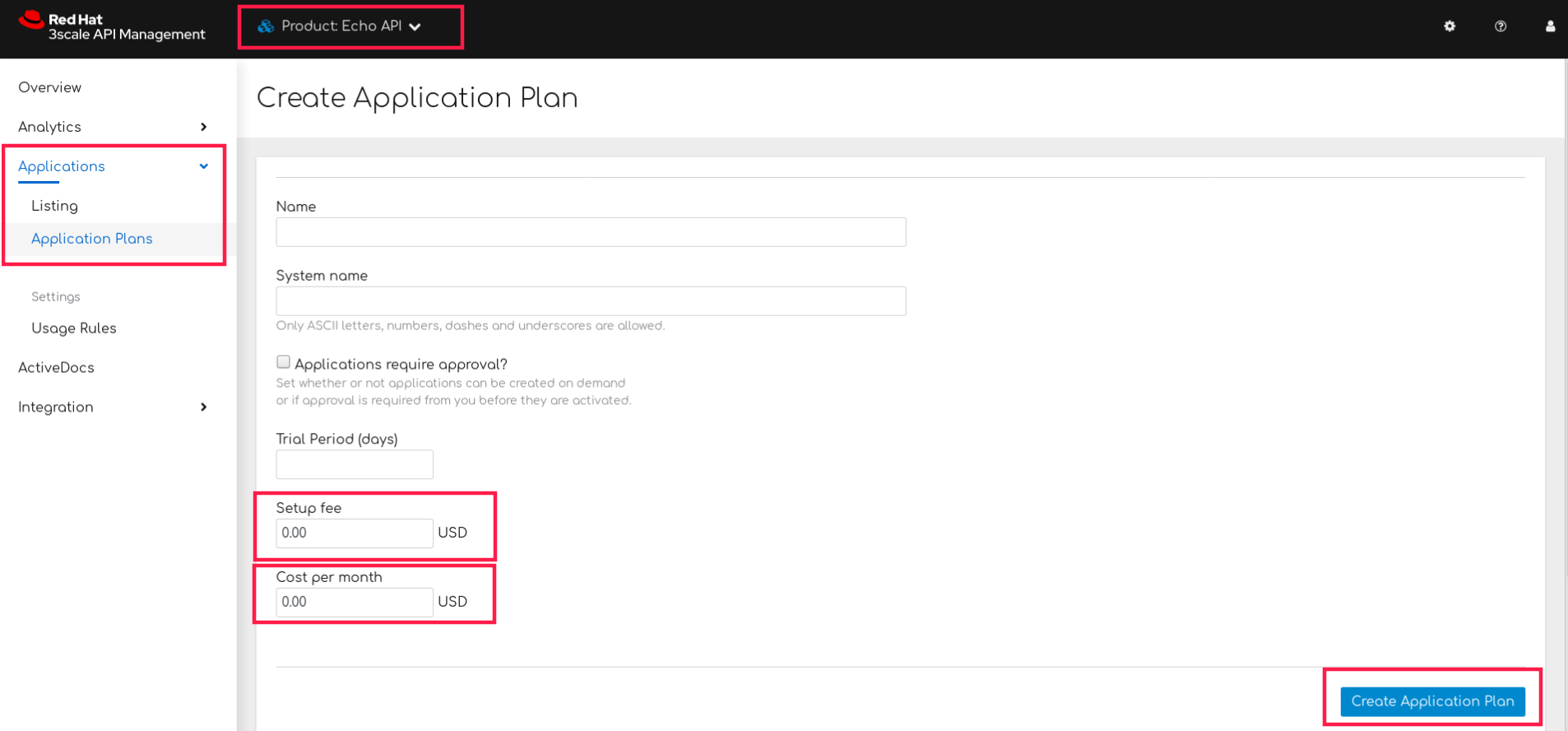Este conteúdo não está disponível no idioma selecionado.
Chapter 21. Provisioning paid plans
One of the most popular ways to monetize an API, either products or backends, is by defining subscription fees based on usage. This section focuses on how to use application plans to provision pricing tiers, and how to set up a paid plan. It is also possible to apply pricing rules at the account, as well as at the product and backend levels - these topics are covered in advanced guides.
21.1. Deciding your pricing model
The first decision to make is how to differentiate between the tiers in your pricing model. The tiers can be driven by volume or usage, API functionality, access to other resources, or a combination of them:
Volume / Usage
The most common way to differentiate between tiers is based on volume because volume usually has a strong correlation to value to the customer as well as cost to serve. You can apply a global hit count for calls on the product or a more granular measurement at the method level. Volume drivers are applied at the level of the global hits metric, or for individual methods under hits. Multiple pricing rules can be applied to any metric. Note that the hits calculation is cumulated over a one-month billing cycle.
Functionality
You can enable or disable access to parts of your product depending on the tier. This is a good approach to distinguish between standard and premium levels.
Resources
You can also create tiers based on access to any other resources that provide value to the customer or drive costs in your infrastructure - for example, gigabytes of bandwidth consumed, number of users, or transaction values. Resource drivers are similar to volume drivers but are applied on custom metrics.
Once you have decided on your pricing drivers, you must decide whether the tiers will be based on a flat rate subscription, a variable rate, or a one-off upfront charge. All three of the pricing drivers above are compatible with the one-off, or monthly flat rate subscriptions. If you decide your pricing will be based on volume of hits or resource consumption, there will of course be a variable element to your pricing.
21.2. Configuring an application plan with your pricing rules
You can either create a new application plan or edit an existing one. When creating a new application plan, you can enter any upfront charges or flat rate subscriptions.
In the edit application view, you can enter or modify the upfront charges and subscriptions.
Next, set up the pricing drivers you selected in Section 21.1, “Deciding your pricing model”:
- Navigate to [Your_product_name] > Overview > Applications > Application Plans.
- Click on an application plan name.
- Go to Metrics, Methods, Limits & Pricing Rules. Here, pricing can be defined at the level of total hits, the granularity of methods, or for any custom metric.
If some of them already exist as metrics, you can edit the item.
Once you are finished setting up your pricing rules, click Update Application plan.
21.3. Creating further pricing tiers
You can define an API paid plan with a single application plan. Usually this would be the case if all your pricing rules are defined by volume or resource drivers. However, if you want to offer separate plans for different segments of your developer community, add more application plans.
The easiest way to do this is to copy the first application plan from the application plan overview page. This way, it will be pre-populated with all the existing metrics and pricing rules. The more care you take to create a full plan the first time, the more time you will save with the plan copy feature.
21.4. Provisioning the paid plans
In order to provision the plans, your developers must create new applications and select one of the new paid plans. You can also do this on their behalf from the admin console. For any existing applications, it is also possible to change from an existing plan to one of the new paid plans.
21.5. Additional references
In conjunction with flat-rate pricing plans, it is common to differentiate between tiers using rate limits. This is explained in provision rate limits
